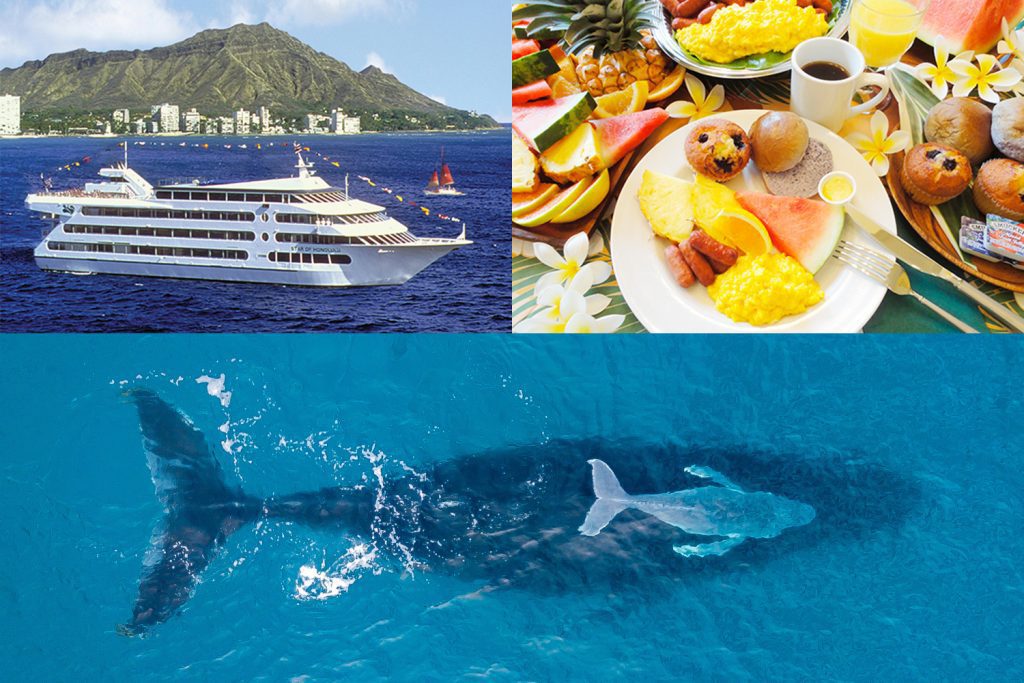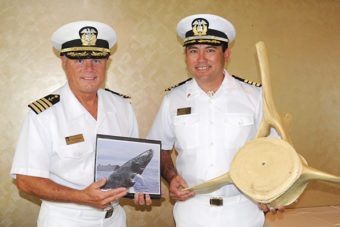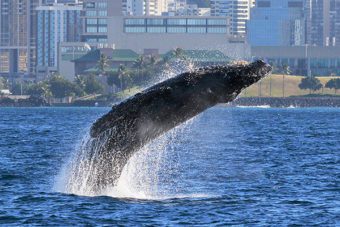Whale Watch Cruises to Set Sail January 2


With the first whale sighting of the season reported earlier this October, it’s a sign that Hawaii’s most popular winter activity is just around the corner. If you’ve never been on a whale watch, it’s an awe-inspiring experience you’ll never forget.
Imagine cruising along the Honolulu coastline, as seasoned captains and Naturalists crew share fascinating insights on Humpback whales. For instance, the humpback is Hawaii’s state marine mammal and are known in Hawaiian as koholā. These majestic creatures have a cultural significance in the islands as well. Whale petroglyphs have been discovered on Lanai, Maui and the Big Island, while some Native Hawaiians consider the koholā their ‘aumākua – a deified ancestor who takes the form of an animal and provides spiritual guidance.


After the summer feeding months, the North Pacific population of humpbacks start their migration to the Hawaiian Islands. With an estimated travel distance of 2,500–3,000 miles, this is considered one of the longest treks of any mammal in the world. In fact, this journey is equivalent to traveling across the Continental United States. Their migration is not yet fully understood, according to the National Oceanic and Atmospheric Administration (NOAA). But experts believe the whales use temperature, ocean currents and the Earth’s magnetic fields as navigation tools.
The NOAA estimates as many as 12,000 humpback whales migrate to the Aloha State each year. They travel 3–7 miles per hour with few stops, and their journey can be completed in as few as 28 days. Once arriving in Hawaii, humpback whales mate, give birth and nurse their calves between November and May in the protected warm waters of the Hawaiian Islands Humpback Whale National Marine Sanctuary.
During their winter stay, the koholā can be seen blowing, spy hopping, tail slapping, breaching and much more. One of the best places to view these behaviors as well as stunning views of Diamond Head and Waikiki is from onboard the Star of Honolulu’s annual Early Bird Whale Watching Cruises available January 2 through March 31, 2022.


Whale sightings on the STAR’s whale watching adventures are guaranteed, or guests receive a “whale check” to cruise again until a whale is sighted (meal, transportation optional).
This cruise is a must-do eco-adventure for young and old alike traveling to Oahu. It’s entertaining and educational for the whole family with a multitude of whale activities and is incredibly affordable with a Child Free Special, where kids ages 3-11, will cruise free per paying adult.
With less than three months remaining before the start of whale season, we can’t wait to welcome you aboard and show you Hawaii’s beloved koholā! Book online today or call us at 808-983-7730.


